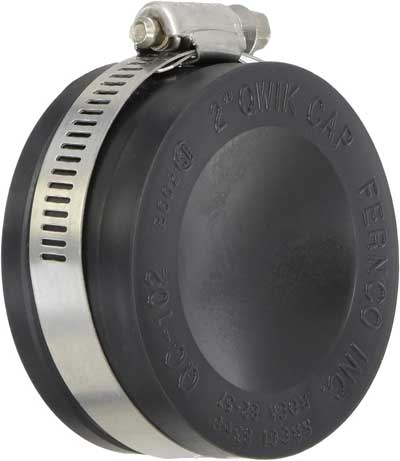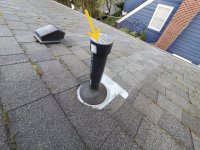Hi all,
I just bought a house that has an area where I think a washer was previously hooked up (not 100% sure). I want to hook a utility sink here instead (the washer has been relocated), and will NOT be hooking a washer up at all. What is the easiest way to hook a utility sink drain and hot/cold tap up to the setup pictured? Much of the info I found online involved adding a utility sink into a pre-existing washer w drain, but my situation is a little different since I don't have or want a washer.
Can I use the abandoned standpipe as a drain? (I am assuming this otherwise needs to be capped?) Or can the drain be hooked up at the very end (bottom right) where there is just a screwcap on the lower horizontal section of ABS? Or do I need to saw into the area above the standpipe and attached a Y ABS pipe for the sink drain? What about the hot/cold hookup... do they sell adaptors that will fix the spigot-type connectors up higher, or is it better to cut the sealed copper pipes at the bottom right and sharkbite into those?
As you can probably tell from my post, I don't have much plumbing experience. I'm a first-time homeowner and trying to start learning, so any help at all is appreciated!
Best, Sam


I just bought a house that has an area where I think a washer was previously hooked up (not 100% sure). I want to hook a utility sink here instead (the washer has been relocated), and will NOT be hooking a washer up at all. What is the easiest way to hook a utility sink drain and hot/cold tap up to the setup pictured? Much of the info I found online involved adding a utility sink into a pre-existing washer w drain, but my situation is a little different since I don't have or want a washer.
Can I use the abandoned standpipe as a drain? (I am assuming this otherwise needs to be capped?) Or can the drain be hooked up at the very end (bottom right) where there is just a screwcap on the lower horizontal section of ABS? Or do I need to saw into the area above the standpipe and attached a Y ABS pipe for the sink drain? What about the hot/cold hookup... do they sell adaptors that will fix the spigot-type connectors up higher, or is it better to cut the sealed copper pipes at the bottom right and sharkbite into those?
As you can probably tell from my post, I don't have much plumbing experience. I'm a first-time homeowner and trying to start learning, so any help at all is appreciated!
Best, Sam


